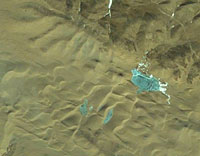
Desertification
in northern Tibet
As Tibetan nomads are forcibly removed from their traditional grassland habitat, the desert is steadily encroaching. The great lakes of Tibet are shrinking and drying up, and the grasslands are disappearing, turning into wastelands. Deserts are expanding in the north and northeast of the Tibetan Plateau in Qinghai and Gansu Provinces, but also in many other locales in China.
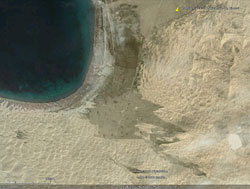
36 46 24 N, 100 47 22 E
East of Qinghai Lake, Qinghai —
Large areas of the northern Tibetan Plateau, along with much of northern China, are threatened by desertification. |
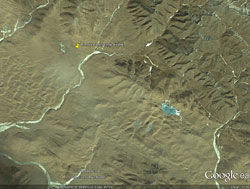
34 25 58 N, 99 04 15 E
Golok, Qinghai —
Near the headwaters of the Yellow River, some grassland areas are being transformed
into desert. |
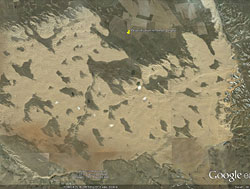
35 39 36 N, 100 53 12 E
Hainan, Qinghai —
In this image, you can see farms threatened by desertification. |
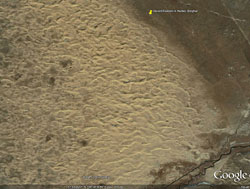
37 11 15 N, 100 34 25 E
Haibei, Qinghai —
In the middle of the high-altitude grassland, a small (3-kilometre-across) desert has formed. |
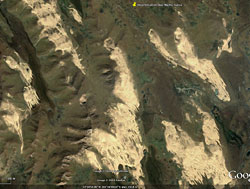
33 54 53 N, 102 16 11 E
near Machu, Gansu —
Even in an area like this, crisscrossed by rivers and with many small lakes, sand dunes are forming. |
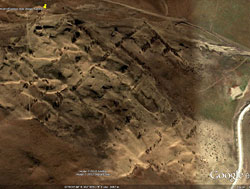
33 45 08 N, 102 30 03 E
near Zoige, Gansu —
In this image, squares on the sand are visible. These squares are dug in an effort to prevent sand from spreading, and thus limit the transformation of grassland to desert. Meantime, the root causes of desertification are ignored: factors like mining, or melting the permafrost by road-building, or removing nomads from the grasslands, the list goes on… |
Back to Eye in the Sky main page






